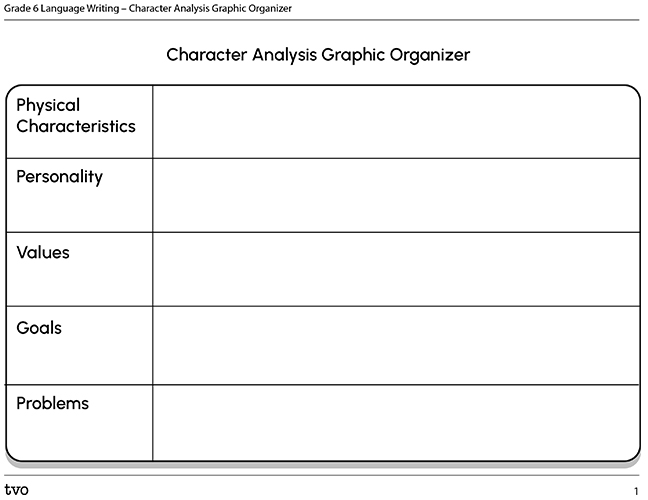Minds On
Who do you remember?
Can you think of a favourite character in a book you have read or perhaps a movie or TV show that you have watched? How would you describe them? What is it about this character that draws you in? What does the author do to help you get to know this character?
There are story characters that we will always remember. This is usually because the author has fully-developed the character by providing us (the reader) with detailed descriptions of who they are. In some instances, we might even feel like we get to know the character personally! Authors use different strategies including descriptive words to help us imagine what these characters look and sound like and how they behave. Let’s begin by building a character word wall.
Physical characteristics
- Words to describe what a character looks like
Personality
- Words to describe how a character behaves
Values
- Words to describe how and what a character thinks or believes in
Goals
- Words to describe things that a character might want to accomplish. These goals can be based
on:
- career
- school
- friends
- family
- adventure
Problems
- Words to describe problems or conflicts a character might face
Student Success
Think-Pair-Share
If possible, independently, or with a partner, develop a list of words that we can add to our character word wall. If you need inspiration, use the internet to research some real-life heroes, such as the people in the following list.
Examples of real-life heroes:
- Greta Thunberg
- Autumn Peltier
- Marley Dias
- Sophie Cruz
- Vishal Vijay
What character traits do the people you researched possess?
Note to teachers: See your teacher guide for collaboration tools, ideas and suggestions.
Action
Character analysis
Select a character from a book, movie, or TV show that you feel like you know well. Then, complete the following fillable and printable Character Analysis Graphic Organizer on your own. You can also complete your character analysis in your notebook.

Press the Activity button to access Character Analysis Graphic Organizer.
Activity (Open PDF in a new tab)Student Success
Think-Pair-Share
Creating a character

Now that you have practiced describing characters you already know, it’s your turn to create a new character! Use the following fillable and printable Character Analysis Graphic Organizer to build a character, or use your notebook. Feel free to sketch your character to help you brainstorm.

Press the Activity button to access Character Analysis Graphic Organizer.
Activity (Open PDF in a new tab)Note to teachers: See your teacher guide for collaboration tools, ideas and suggestions.
Consolidation
Bringing a character to life

In the last activity, you spent some time developing your character. Now put that character into action! Create a short scene starring your new character. If you have a story that you are currently working on, feel free to add your character to it.
As you write, consider your audience. Does your scene have enough detail to help your reader(s) really get to know the character?
Student Success
Think-Pair-Share
Work with a partner or independently. Before handing in your assignment, if possible, ask a partner to read over your work.
Did you identify and/or imagine the following character traits:
- physical characteristics
- personality
- values
- goals
- problems
Use your partner’s feedback to edit your scene. Then, share it with your teacher.
Note to teachers: See your teacher guide for collaboration tools, ideas and suggestions.
Reflection
As you read through these descriptions, which sentence best describes how you are feeling about your understanding of this learning activity? Press the button that is beside this sentence.
I feel...
Now, record your ideas using a voice recorder, speech-to-text, or writing tool.